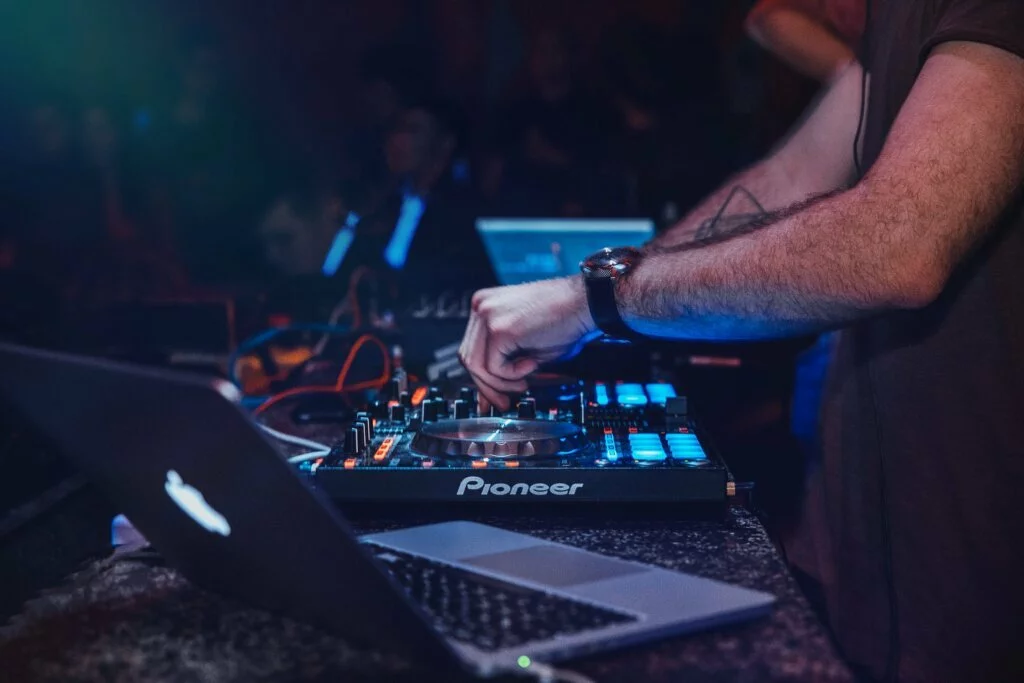
More than any other genre, electronic music can be broken down into an astonishing number of niches and subgenres. This guide will help you scratch the surface of the electronic music genre landscape.
How many different types of electronic music are there?
- Electronica
- House
- Techno
- Drum and Bass
- Jungle
- Garage
- Dubstep
- Electro
- Disco
- Trance
- Kuduro
- Hardcore
- IDM
- Ambient
- Experimental
Though it contains a myriad of subgenres, electronic music is sometimes treated as a music genre in itself. It actually gets a little confusing, as many people use the term ‘electronic music’ to mean the kind of electronic music that we hear hear in the charts—-David Guetta, Calvin Harris, etc. In fact, electronic music should be taken as an umbrella term for any kind of music produced primarily with electronic instruments or tools. Rather than describing one set of sounds, electronic is a banner under which dozens, if not hundreds of other genres sit. The genres below are some of the biggest and most significant. The list above takes in the major players, but there are many more subgenres that live within these boundaries.
House
House music was the first form of electronic music as we know it today, and to many it is still the best. Formulated in the black neighbourhoods of Chicago in the 1980s, house music sprung up from the ashes of disco, and was pioneered by young musicians who bought Roland TR-808s and other drum machines at pawn shops.
House has remained popular ever since, with DJs from the genre’s heyday still playing festivals and selling out shows around the world, and classic tracks continuing to set dancefloors alight. Many of the world’s “superstar DJs” play a pop-infused form of house, and the genre has influenced everything from R&B and hip-hop to pop.
Artists include: Marshall Jefferson, Steve ‘Silk’ Hurley, Frankie Knuckles, Larry Heard
Subgenres include: Deep House, Acid House, Progressive House, Soulful House
Techno
Keeping the list chronological, techno was the second genre of electronic music to break through. Inspired in equal parts by disco, house, and computer-based music coming out of Europe and Japan, techno emerged in Detroit under similar circumstances to house in Chicago.
While house music embraced piano playing and gospel vocals, techno focused on more of a computerised sound, with harsh, mechanical beats serving as the backbone. As with house, techno classics and originators are still popular in clubs today. And the genre has been through several iterations.
Artists include: Derrick May, Kevin Saunderson, Carl Craig
Subgenres include: Tech House, Minimal
Dubstep
Taking a trip over the pond to London, we find dubstep. The successor to another UK genre, 2-step, dubstep’s aggressive sound is based on 140 bpm tempos and the wild use of electronic instruments. You can trace dubstep’s origins back to the 1990s, but it really took off in the mid-2000s thanks to mainstream exposure from BBC DJs like John Peel, and later breakthrough mainstream hits from the likes of Skrillex.
Artists include: Skrillex, Skream, Phaeleh
Subgenres include: Glitchstep, Halfstep, Chillstep
Garage
Also known as UK garage or UKG, garage is one of the UK’s most popular electronic music creations. Largely influenced by house music but allowing for more variations in rhythm, garage often bases itself on chopped vocal samples and 130 bpm tempos.
Garage’s success began in the late-90s world of pirate radio, before artists like Artful Dodger broke through into the mainstream. The group’s Craig David-featuring track ‘Re-Rewind’ was certified Platinum, and became a huge cultural touchstone for a generation.
Artists include: Artful Dodger, DJ Cartier, El-B
Subgenres include: Breakstep, 2-step, Breakstep, Dark Garage
Drum & Bass
Another UK creation, drum & bass has its origins in a the UK rave and jungle scenes of the 1990s. Clocking in at a heartracing 160 bpm as a minimum, drum & bass unsurprisingly focuses on drum rhythms and bass lines over all else.
Like dubstep and garage, drum & bass eventually had its moment of mainstream success, and went on to have a huge influence on current superstars like Chase & Status and Netsky.
Artists include: Goldie, Roni Size, Fabio & Grooverider
Subgenres include: Breakcore, Ragga Jungle, Neurofunk

